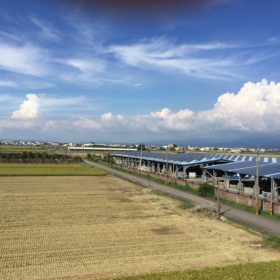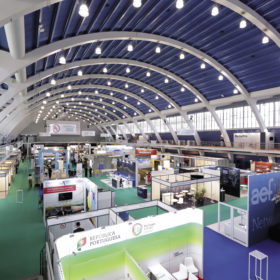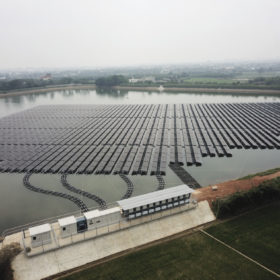PV going private in Taiwan
To date, the majority of Taiwan’s solar projects have sold power into the grid, with developers signing 20 year PPAs with the island’s utility Taiwan Power Company (Taipower). But new regulations now aim to make private power purchase agreements (PPAs) a more attractive option for PV developers on the island.
One step at a time … is not enough in Africa
The African continent often generates impressive solar news and offers new angles on renewable energy systems and integration. The 21st Africa Energy Forum, held between June 11 and 14 in Lisbon, explored the various ways in which solar is being rolled out across the continent. pv magazine offers a country-by-country review of some of the Sub-Saharan markets discussed at the event.
In conversation: Floating PV to rise to GW scale in India
Tenders have begun to drive next-generation solar and storage applications in India. And as developers, administrators and asset owners become more familiar with the technology, the advantages of PV on water and in battery storage are driving the emergence of a pipeline of projects. Surbhi Singhvi, manager of consulting for Bridge to India, discusses the outlook and challenges for both applications.
The specter of PV protectionism
Trade tariffs are spreading across the global PV industry. The United States has been especially active with its sandwich of old antidumping and countervailing duties coupled with new Section 201, 232 and 301 duties. Some of these are part of the Sino-U.S. trade dispute; others impact not only Chinese producers, but manufacturers around the world. So, what will be the impact of this new era of PV protectionism on the solar sector?
PV could help clear Indonesia’s air
The Institute for Essential Services Reform (IESR), an Indonesian think tank, has reported that the country has the potential to install up to 655 GW of rooftop PV capacity. Contrast that with a current installed capacity of just 100 MW, and it’s clear that solar PV still has a long way to go before it reaches its potential throughout Indonesia. Given the poor air quality in many heavily populated cities across the archipelago, PV deployment is long overdue in the Southeast Asian nation.
Downstream up: Taiwan’s multi-GW ambitions
Once the world’s second-largest PV cell manufacturer, Taiwan’s upstream industry was crippled under its inability to compete with mainland China’s bullish global takeover in PV manufacturing. The island’s government has put forth efforts to keep Taiwan’s PV supply chain intact – and ambitious goals and initiatives are driving demand from the downstream up.
Is China’s market heading toward a cliff edge?
Even when taken in the context of the growing pessimism that has gripped China’s PV industry regarding 2019 demand since the middle of the year, the latest figures from the China Photovoltaic Industry Association (CPIA) are astonishing. More optimistic forecasts from earlier in the year have been downwardly revised, with installations headed for a “cliff edge” decline that could see demand fall by as much as 50% year on year. So, what exactly has taken place?
From solar to gas
The opportunities for power-to-gas have long interested the solar community, but large-scale projects have been exceptionally rare. Outgoing CEO of SolarPower Europe James Watson has presided over a transformative period at the organization, and has departed this month to head up Eurogas – right at the point the region’s solar sector is set for revival. Advancing a power-to-gas agenda, Watson says, will be a big part of his new challenge.
Zero energy, maximum support
As Japan’s solar appetite shrinks amid questions over everything from falling FIT rates, through the availability of suitable land, to the revival of nuclear generation, Japan’s Zero Energy Homes policies, requiring new buildings to be integrated with solar PV and various energy efficiency measures, could provide a significant boost to installations. pv magazine looks into Japan’s upcoming residential recovery.
The land of the Crescent Sun
Despite its abundant solar resources, Turkey’s potential for solar energy development remains largely untapped. Although the market grew considerably between 2017 and 2018, the outlook for the next two years, due to the macroeconomic situation and the current regulatory framework, appears rather gloomy. If regulations will not be changed, and tenders for large-scale solar remain unimproved, unsubsidized PV and self-consumption may remain the best options available to seek more growth.










